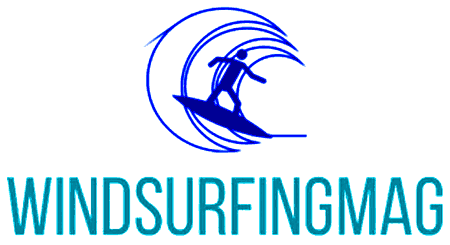The surfing stance is a critical part of surfing such that every surfer needs to find their balance. Hence, one of the basic things to train is your surfing stance.
A comfortable stance is always dependent on your center of gravity and footing while riding your surfboard. Usually, you will identify a beginner by their surfing stance; however, it becomes better over time.
Nevertheless, having an excellent surfing stance early can boost your development. It allows you to have more control over your surfboard and limits your chances of falling off. Subsequently, you can move on to developing new stunts and tricks.
Do you experience difficulties finding your best surfing stance? Then worry less as I will be discussing in-depth details about surfing stances and how to achieve a good one.
Table of Contents
What Is a Surfing Stance?
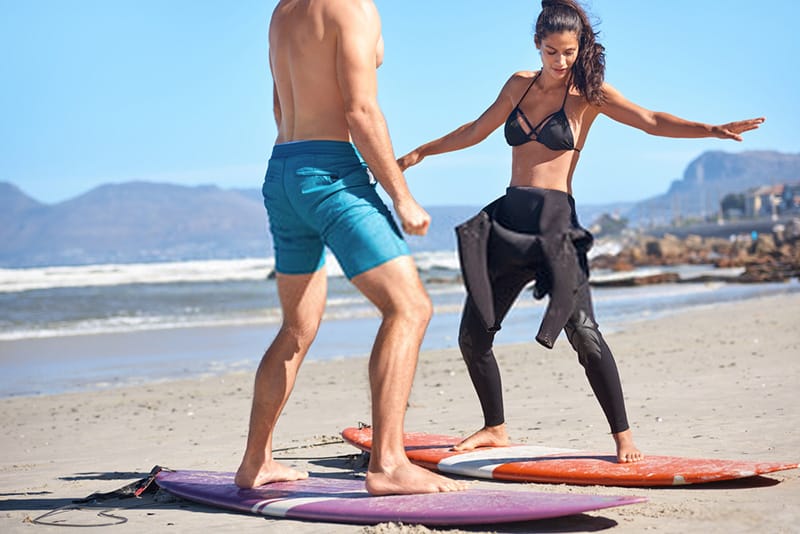
The term “surfing stance” explicitly relates to a surfer’s balance on their surfboard. Hence, in simple terms, surfing stance is your posture or orientation while riding on the waves.
While surfing stances may vary slightly among surfers, it often involves bending the knee. Some width always exists between the surfer’s legs for traction. Surfers also engage their hands to maintain balance.
Furthermore, riders also lean forward to spread their weight over the surfboard. Before heading to the sea, beginners are expected to have mastered their surfing stance.
Indeed, it might be difficult to perfect a stance. In fact, there are some other factors influencing surfing stances, such as the wave and your surfboard. But, for now, you need to know the common surfing stances.
How to Know Your Surfing Stance?
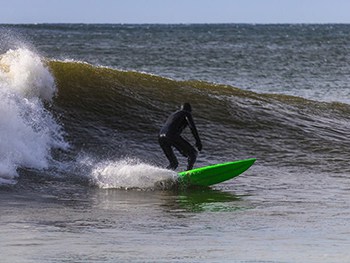
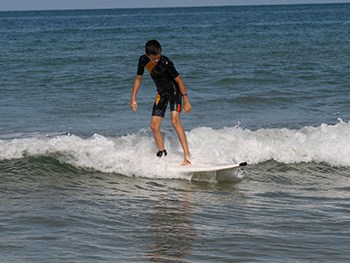
Some surfers do not know how to identify their surfing stance. Similarly, many beginners have no idea how to classify and improve their stance. There are two broad categories of surfing stance – goofy or regular.
So what are the contrasts between the two? The differences are in the positioning of both legs. Surfing on a surfboard requires you to have a front foot and a back foot. However, your preferred front foot (left or right) depends on you.
Your preferred front foot choice tells which surfing stance you like to use. If your front foot is your dominant foot, then you have a goofy surfing stance. Alternatively, if it is your non-dominant foot, you have a regular stance.
You do not have to argue about which foot comes first. You can simply attempt to fall forward or tell a friend to push you forward. Instinctually, the foot you bring forward to avoid falling is your front foot.
And this foot can be your dominant or non-dominant foot. Regardless of which stance you have, you do not have to panic or force some changes as it can drastically affect your performance.
Where and How to Plant Your Feet on Your Surfboard?
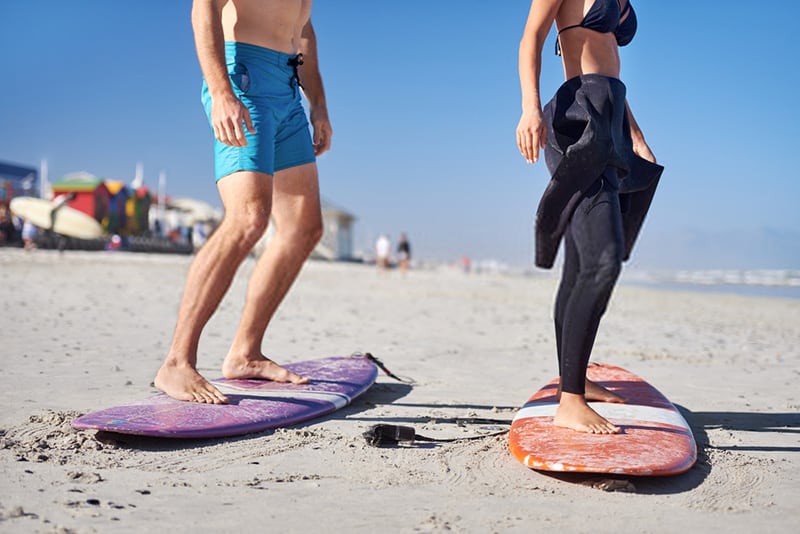
1. Distance Between the Two Feet (Stance Width)
The distance between your two feet depends on the size of the surfboard, the wave, your height, and your weight. Ideally, you should have a stance width based on your shoulder width or slightly above it. Your stance must not be too wide, or you might be thrown off the surfboard if the waves are too strong.
Read more: How to Choose a Surfboard Size for Beginners?
2. Planting Your Feet on Your Surfboard
Even when you maintain the stance width, you will still have issues if you plant your feet wrongly on the surfboard. Being too far back can slow you down, while being too far forward can make you lose cruise control.
Similarly, planting your feet to one side can cause you to flip. You should find the stringer. If your surfboard has multiple stringers or none, you should stick to the center of gravity of the surfboard.
You need to plant your feet along with this balance point, but your front foot should be close to the board’s center (longitudinally). On the other hand, your back foot should be fairly away from the tail (concerning stance width).
3. Pointing Your Feet
While surfing, pointing your feet outwards or towards each other can cause inconveniences. Also, you may experience difficulties controlling your surfboard.
For a perfect surfing stance, your knees should be bent and pointing at the same time. Your front foot should be pointed forward slightly, and your back foot should be positioned along the board’s width.
This way, you can spread your weight and make necessary moves correctly. Except if you are an expert, you should follow these instructions properly.
How to Improve Your Surfing Stance?
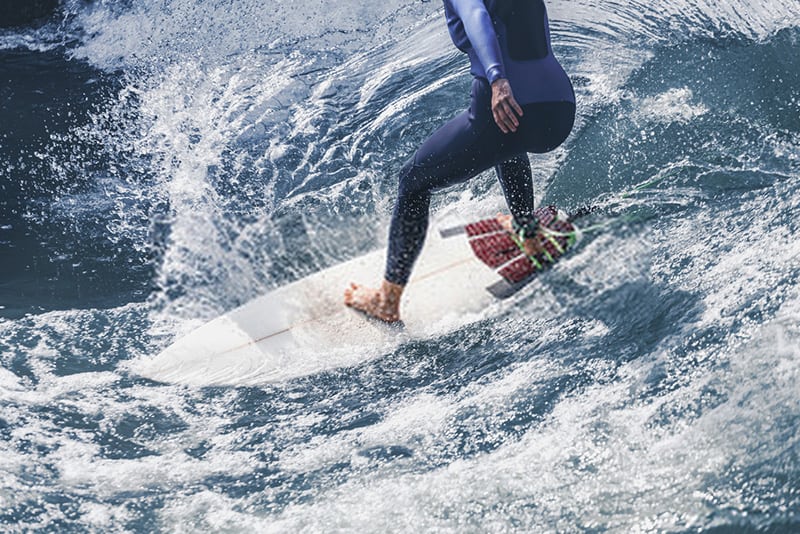
1. Open Stance
Another way to improve your surfing stance (and wake surf stance) is to limit the openness of your feet. In most cases, the surfer’s stance may feel too open. Hence, your front foot points forward rather than to the side.
Pointing your front foot to the side allows better control and grip. Furthermore, you are able to perform smoother rail-to-rail transitions. Your front shoulder should point forward.
2. Avoid the Poo Stance
The poo stance is a common mistake among surfers, especially beginners and intermediates. As the name suggests, the surfer adopts a stance that resembles a poo position while surfing. Hence, your knees go apart (in opposite directions).
It has a high consequence on your performance. It makes it difficult to move or readjust your hips backward or forwards. Consequently, you may not find it easy to accelerate or slow down. Instead, put your knees together to ensure maximum control.
3. Keep a Low Center of Gravity
While surfing, you are faced with various waves that attempt to throw you off your surfboard. If you are going to stay glued on the board, you must keep a low center of gravity.
While surfing, you are not expected to be fully upright. Instead, you should bend a little to lower your center of gravity. Also, your knees should be bent while keeping your eyes straightforward to where you are going.
This way, you can enjoy more traction from your surf wax and traction pads, enforce more control and increase your board’s responsiveness. To make smooth moves and turns, use your hips instead of your arms, heels, or toes.
Do not bend your chest closer to the surfboard. However, if you feel the need to do that, bend your knees instead.
4. Position Your Head Correctly
For many surfers, they neglect the position of their heads. However, you want and need to keep your body as streamlined and balanced as possible. To achieve that, you must align (center) your head properly over your body.
5. Utilizing Your Hands
While using your body and feet, your hands are not meant to be kept idle. They can be put into use particularly to maintain your balance and surfing stance.
FAQs
Are you still looking for answers to some mind-boggling questions? Are you having issues with how surfing stances impact surfing? Having researched the internet, I have also compiled some frequently asked questions related to surfing stances.
Is It Better to Surf Goofy or Regular?
Not at all. You should not force yourself to use a particular surfing stance. What matters most is your comfort while surfing. You don’t want to exhaust yourself easily or strain your muscles with a bad surfing stance. It is best to use whichever stance you find comfortable.
Where Should I Stand on My Surfboard?
For excellent performance, you should stand on the centerline of your surfboard. Your front foot near the center and the back foot close to the tail considering stance width. Standing a little far out will slow you down or make you lose control.
Also, if you stand too close to the rails, you may turn inadvertently or flip. You should plant your feet correctly while putting them in a comfortable surfing stance.
Conclusion
Surfing is a fantastic activity that may look simple to the eyes. Of course, it is simple if you follow the proper guidelines. Mastering your surfing stance is one of the basic parts that can ensure simplicity and swift development.
Your surfing stance is dependent on your body size, preferred surfboard, experience level, and the waves. However, identifying your best surfing stance and how to position your front and back feet will go a long way.
Afterward, you can focus on developing and becoming better. I hope by now you know your surfing stance and those aspects you need to work on.
Do you have friends with issues discovering their surfing stance and improving it? I believe it is best to share this article with them. Kindly hit the social media buttons on the page to share effortlessly.
Similarly, your opinions and questions are anticipated and welcomed. Should you have any, kindly leave them for me in the comment section below.
